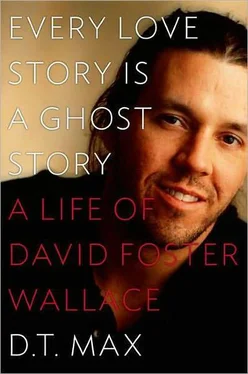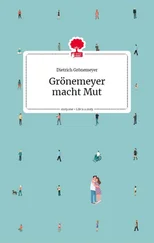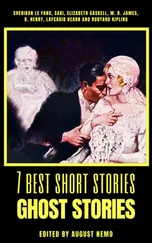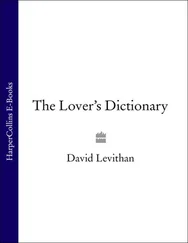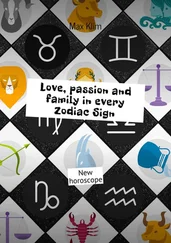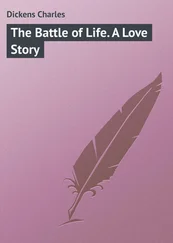He mined them for material, as he did everyone. Ashby told him a story about having kissed the feet of his newborn sister because he had mumps. Soon it appeared in “Forever Overhead,” along with the “very soft yellow blanket” of Ashby’s childhood. 6The same night, as the three were watching Kansas City and St. Louis clinch spots in the World Series, Wallace quietly stiffened their gin and tonics. How had they lost their virginity? he asked them. He claimed to have excellent “gaydar”; then was astonished to learn Ashby was gay.
Wallace had by now realized that the “perfectly symmetrical” undergraduate beauties at Arizona were not going to be interested in him. In his grandfather’s old long-sleeved T-shirts, lace-up Timberland boots, and McLagan’s beloved leather jacket, he hardly fit the relaxed and sunny Arizona mold. So he turned his attention to the women in the MFA program. “The girls in the writing program are erotic in a different way,” he reported to his Amherst friends. “There’s a propensity towards sandals. Long hair. Armpits make the acquaintance of shavers not quite as often as I’d prefer.” He allowed, though, that “there’s a kind of mystical, dreamy, spacey eroticism about them.”
At a “Fuck Art. Let’s Dance” party that fall, Wallace met Gale Walden, a young poet. She came from the Chicago area and embodied everything his parents in their house of reason were skeptical of. Her thinking was elliptical and imaginative and seemed to hold the promise of a less anxious relationship to reality. She consulted the horoscope, drew tarot cards, and wore vintage beaded sweaters in the Arizona heat.
Walden’s independence and disheveled appeal attracted Wallace. (“Sloppy sexiness pulls Erdedy in like a well-groomed moth to a lit window,” Wallace writes of one of his characters in Infinite Jest .) Walden also knew a great deal of poetry of the sort he had never considered, not Eliot’s poetry of ideas, but of sensibility. She called him “David” instead of “Dave.” He helped with her grammar and taught her history.
Walden wasn’t sure about getting involved with Wallace. Four years older, she found him immature, “almost as if he chirped rather than talked,” she remembered. She would go around asking her friends, “Shall I date this boy?” Wallace tried to help her make up her mind. He peppered her with letters, popped out of bushes to surprise her, and wrote her a condolence note when her dog died. The note persuaded her to go to a movie with him, and when that turned out to be sold out, they went to a coffee shop, where Wallace was able to persuade her with his brilliant mind.
Soon they were a couple, well known in the program — he the left-brained genius, she the right-brained beauty. They agreed she wouldn’t have to play tennis and he wouldn’t have to dance. They split their age difference: he would say he was two years older; she would be two years younger. That way when they talked of the future, Walden remembers, they could say, “When we are thirty…” He went along to her poetry classes. One evening Wallace dropped by his old friend Andrea Justus’s house to borrow her car and wound up taking her to a favorite spot in the mountains, where, as they sat on the hood looking at the twinkling city below, he put her levelheadedness to the test by telling her about the remarkable, beautiful, and talented woman he was now dating. (Justus was annoyed.) For Wallace, Walden was a new kind of girlfriend: he had until now gravitated toward women who could ground him, save him, if necessary. Now he had found a muse, a spur to his creativity. He let Costello know he had met an epochal beauty.
Wallace had been able to be himself with Susie Perkins, a hometown girl, but with Walden he felt the need to pretend, not hard given his natural bent for mystery and secrecy. She liked musicians, so he played her an album by the esteemed Amherst a cappella group the Zumbyes, and claimed he was one of the voices on the recording. Then he had to get his Amherst friends to cover for him. 7There was a mythopoeic, volatile quality to their relationship. One time Walden demanded he find her a bun with no burger. Wallace disappeared and came back two hours later with a story about having had a fight with a McDonald’s counterman.
But mostly, once again, Wallace was writing. He was starting new stories and reworking old ones. The work was coming quickly and easily. He would look up and hours would have passed. He was evolving into a different kind of writer. The change was gradual and never involved entirely abandoning his interest in words and play and how we know what we know about the world, the material of Broom , but it took a new direction. Spurred by his readings in literary theory, he was trying to grow beyond such self-referential questions, to answer the question of how to write in a new way.
Trying to write in a new way was not a goal unique to Wallace; it is the exemplary act of each new literary generation. For writers from the 1920s to the 1950s the main route had been modernism, with its emphasis on psychological subjectivity and its retreat from assertions of objective knowledge. Many writers in the 1960s and ’70s, faced with the ugliness of the American landscape and its saturation by the culture of mass media, turned to highlighting the artificiality of the literary act itself. Wallace of course had a great fondness for many of the writers of this postmodernist movement, primarily Barthelme (who, as he would say, had “rung his cherries” in college) and Pynchon, whom he had all but engulfed Bombardini-like in The Broom of the System .
But the path the writers who had come just before Wallace’s generation chose was very different. They sought to pare down their prose, to purvey an exhausted realism. Life weighed heavily; existence carried few possibilities of pleasure or redemption. In minimalism, simple sentences carried great meanings and a waitress’s trip to the K-Mart telegraphed misery and blighted opportunity. It was the world according to Raymond Carver, as interpreted by his thousands of descendants. 8
As Wallace entered Arizona, MFA students all over America were writing stories in the minimalist style, affecting ennui and disappointment toward a world they knew mostly from other minimalists. Wallace accepted the minimalists’ attitude toward the landscape of America and its debilitating effect on its inhabitants, but he disliked how formally and verbally claustrophobic their writing was. Minimalist stories gave the reader little experience of what it was like to be assaulted the way in real life their characters would be. They were effectively unease recollected in tranquillity. While Wallace certainly knew what it felt like to be overwhelmed by the stimuli of modern life — indeed his response to them when under stress was more extreme than anyone knew — this was not his stance when he recreated experience. As a writer, he was a folder-in and includer, a maximalist, someone who wanted to capture the everything of America.
Most of the teachers at Arizona were not fans of postmodernism, which they associated with a different era and condition and a preciousness that stories in the true American grain should not possess, but they also did not like minimalism, which smelled trendy to them. They particularly disliked one thing the minimalists did that Wallace admired. In his class Elman assigned both Jay McInerney’s Bright Lights, Big City and Bret Easton Ellis’s Less Than Zero. Ellis and McInerney were minimalists with attitude, bored with being bored. Dubbed “the brat pack,” by the mid-1980s they had become required reading among the affluent and college-educated young. Predictably, then, the students in Elman’s class tore apart their easy plots and heartstring-plucking narratives. Wallace, though, did not go along entirely. He was interested in the way their simple narratives swept up and held the reader and, in the case of Ellis, how he used brand names as shorthand for cultural information like status and even to stand in for emotional states. “What should we be writing about?” he demanded to know, “Horses and buggies?” 9
Читать дальше
